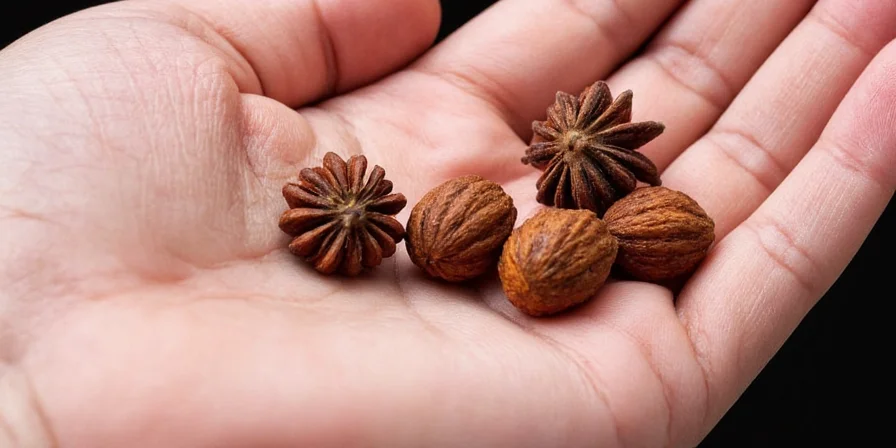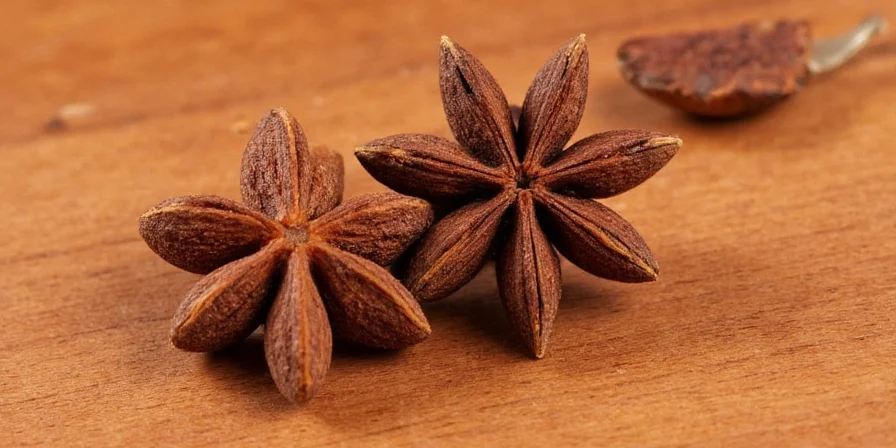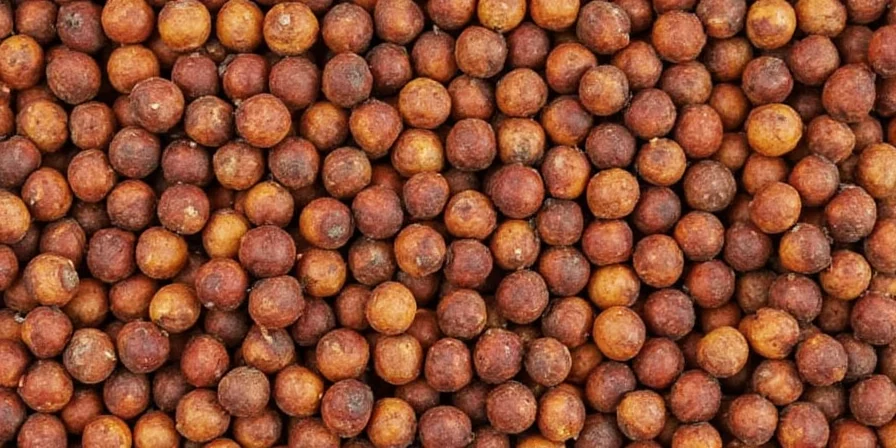Allspice is a single spice made from dried berries of the Pimenta dioica tree, not a blend of cinnamon, cloves, and nutmeg as commonly believed. Native to the Caribbean and Central America, these small berries deliver a complex flavor profile combining warm, sweet, and peppery notes that mimic multiple spices while remaining chemically distinct. This complete guide explains exactly what allspice contains, how to use it properly, and why it's essential in both sweet and savory cooking.
Understanding allspice's true nature solves common kitchen frustrations: Why your "allspice" substitute never quite works? Why recipes specify whole berries versus ground? How to store it for maximum freshness? We'll address these practical concerns with science-backed solutions that work for everyday home cooks.
Table of Contents
- What Exactly Is Allspice? (The Simple Answer)
- Allspice Ingredients: What's Really Inside
- What Does Allspice Taste Like? Explained
- Best Allspice Substitutes When You're Out
- 10 Practical Ways to Use Allspice Today
- How to Store Allspice Properly (3 Methods)
- Allspice Myths Busted: What You've Been Told Wrong
- Why Allspice Belongs in Every Kitchen
- Frequently Asked Questions
What Exactly Is Allspice? (The Simple Answer)
Allspice comes from the dried, unripe berries of the Pimenta dioica tree, native to Jamaica and Central America. Despite its name suggesting a spice blend, allspice is a single ingredient that naturally combines flavors reminiscent of cinnamon, cloves, and nutmeg. Harvested green and sun-dried until dark brown, these small berries contain natural compounds that create its distinctive warm, sweet, and slightly peppery taste.
Chefs and home cooks rely on allspice for authentic Caribbean jerk seasoning, Middle Eastern stews, and classic baked goods. Recognizing it as a standalone spice—not a pre-mixed blend—prevents common recipe mistakes and delivers consistent results.
Key Facts Everyone Should Know:
- Not a blend: Allspice is a single botanical ingredient
- Other names: Jamaica pepper or pimento (not to be confused with bell peppers)
- Flavor profile: Warm sweetness with clove-like aroma and subtle peppery finish
- Best form: Whole berries stay fresh 3x longer than pre-ground versions
Allspice Ingredients: What's Really Inside
Allspice's magic comes from five natural compounds working together. Unlike artificial blends, these components exist in consistent ratios in every berry, creating reliable flavor in your recipes. Understanding these compounds helps you use allspice effectively—especially when substitutions become necessary.
| Compound | Natural Source | What It Contributes to Flavor |
|---|---|---|
| Eugenol (60-80%) | Naturally in berries | Warming spiciness (same compound as in cloves) |
| Caryophyllene | Naturally in berries | Earthy, peppery notes (found in black pepper) |
| Linalool | Naturally in berries | Subtle floral-citrus lift (present in lavender) |
| Ethyl Cinnamate | Naturally in berries | Sweet fruitiness (common in cinnamon) |
| Tannins | Naturally in berries | Balancing astringency for marinades |
Why This Matters for Cooking:
The natural balance of these compounds makes allspice superior to homemade spice mixes for authentic recipes. When a Caribbean jerk recipe calls for allspice, substituting individual spices rarely delivers the same depth because you can't replicate nature's precise ratios.
What Does Allspice Taste Like? Explained
Allspice delivers warm sweetness with distinct clove-like aroma and a subtle peppery finish. Think of it as nature's perfect spice blend—but with consistent flavor in every berry. Its unique profile shines in both sweet and savory dishes:
- In baking: Adds depth to pumpkin pie, gingerbread, and spice cakes without overpowering
- In meats: Complements pork, chicken, and game with warm notes that enhance without dominating
- In beverages: Creates natural spice notes in mulled wine, cider, and even coffee
Real-World Flavor Comparison:
- Like cinnamon: But with more complexity and less sweetness
- Like cloves: But milder and more balanced
- Like nutmeg: But with added peppery warmth
Best Allspice Substitutes When You're Out
When you need allspice but don't have it, these substitutions work for specific recipes. Remember: no substitute perfectly replicates allspice because you can't match nature's precise compound ratios.
Most Effective Substitutions:
- For baking: 1/2 tsp cinnamon + 1/4 tsp nutmeg + pinch of cloves
- For savory dishes: 1/2 tsp cinnamon + 1/4 tsp cloves + pinch of black pepper
- Quick jerk seasoning: 1 tsp thyme + 1/4 tsp cloves + pinch of nutmeg
Pro tip: If using ground spices as substitutes, reduce quantity by 25% since pre-ground spices lose potency faster than whole allspice berries.
10 Practical Ways to Use Allspice Today
Move beyond holiday recipes with these everyday applications:
- Perfect pumpkin pie: Add 1/4 tsp to your filling for authentic warmth without clove bitterness
- Homemade sausage: Mix 1/2 tsp per pound of meat for balanced spice
- Marinades: Use whole berries in meat marinades—they release flavor slowly for even seasoning
- Apple cider: Simmer 3 whole berries in 4 cups cider for natural spice
- Coffee boost: Add one whole berry to coffee grounds before brewing
- Vegetable roasting: Toss root vegetables with olive oil and 1/4 tsp ground allspice
- Barbecue rub: Combine with paprika and brown sugar for pork ribs
- Cocktails: Muddle one berry in rum-based drinks for subtle spice
- Bean dishes: Add one whole berry when cooking beans to reduce gas
- Homemade ketchup: Use 1/4 tsp for authentic depth

How to Store Allspice Properly (3 Methods)
Allspice loses flavor faster than many spices due to its volatile compounds. Use these storage methods to maximize freshness:
- Short-term (up to 6 months): Store whole berries in an airtight container away from light and heat
- Medium-term (up to 18 months): Keep in dark glass container in cool pantry (below 70°F/21°C)
- Long-term (2+ years): Freeze whole berries in vacuum-sealed container
Test for Freshness:
Rub a berry between your fingers. If you smell strong clove-like aroma within 10 seconds, it's still fresh. If not, it's time to replace.

Allspice Myths Busted: What You've Been Told Wrong
Common misconceptions lead to kitchen mistakes. Let's set the record straight:
- Myth: Allspice contains cinnamon, cloves, and nutmeg
- Truth: It's a single spice from Pimenta dioica berries that naturally mimics those flavors
- Myth: Ground allspice works the same as whole berries
- Truth: Ground loses 50% flavor within 6 months; whole berries stay fresh for 2+ years
- Myth: Only for sweet recipes like pies and cakes
- Truth: Essential in savory dishes from jerk chicken to charcuterie and bean stews
- Myth: Allspice and pumpkin pie spice are interchangeable
- Truth: Pumpkin pie spice contains allspice plus other spices in varying ratios

Why Allspice Belongs in Every Kitchen
Allspice solves a common cooking problem: achieving balanced spice flavor without using multiple ingredients. Its natural compound ratios deliver consistent results that homemade blends can't match. Whether you're making Caribbean jerk chicken, holiday baked goods, or everyday marinades, keeping whole allspice berries on hand ensures you always have this versatile flavor enhancer available.
By understanding allspice as nature's perfect spice combination—not an artificial blend—you'll make better seasoning decisions and achieve more consistent results. Start with whole berries, store them properly, and use them according to these practical guidelines to transform your cooking with minimal effort.
Frequently Asked Questions
What's the difference between allspice and pumpkin pie spice?
Allspice is a single spice from Pimenta dioica berries. Pumpkin pie spice is a blend typically containing 10-25% allspice plus cinnamon, ginger, and nutmeg. They're not interchangeable—pumpkin pie spice delivers different flavor ratios and won't work in recipes specifically calling for allspice.
Why use whole allspice berries instead of ground?
Whole berries retain freshness 3x longer than ground spice because grinding exposes more surface area to air and light. Whole berries stay flavorful for 2+ years when stored properly, while ground allspice loses 50% of its potency within 6 months. For best results, buy whole berries and grind only what you need.
Can I substitute allspice for cloves in recipes?
Yes, but use half the amount. Since allspice contains eugenol (the compound that gives cloves their flavor), it can substitute for cloves, but at half strength to avoid overpowering your dish. For example, if a recipe calls for 1 tsp cloves, use 1/2 tsp allspice instead.
Is allspice safe for people with clove allergies?
No. People with clove allergies should avoid allspice because it contains eugenol (60-80% of its essential oil), the same compound responsible for clove allergies. The concentration is high enough to potentially trigger allergic reactions.











 浙公网安备
33010002000092号
浙公网安备
33010002000092号 浙B2-20120091-4
浙B2-20120091-4